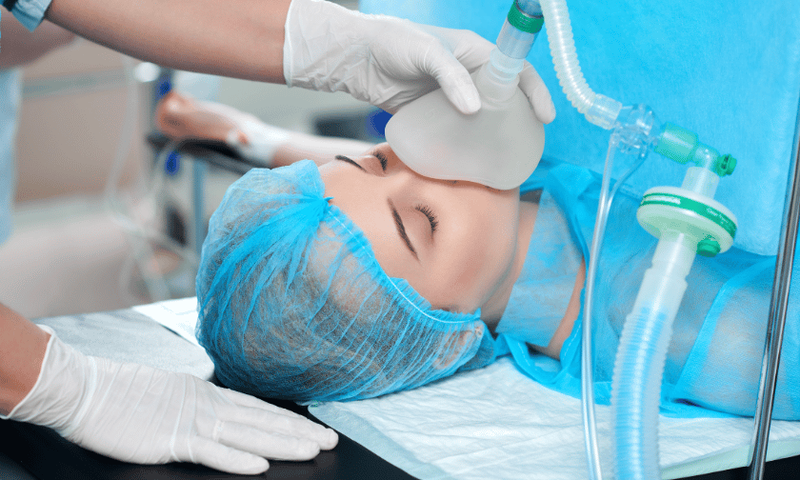
Understanding Sedation
Before delving into the specifics of each sedation method, it's crucial to highlight the significance of understanding the options available and their associated costs.
Dental anxiety affects millions of people worldwide, often leading to avoidance of necessary dental care.
Sedation dentistry offers a solution by providing a calm and relaxed environment for patients, allowing them to receive the treatment they need without unnecessary stress or discomfort.
Nitrous Oxide (Happy Gas)
Nitrous oxide, colloquially known as happy gas, stands among the most prevalent forms of sedation in dentistry. It's administered via a mask placed over the nose, permitting patients to inhale a blend of nitrous oxide and oxygen. This concoction induces a state of relaxation and elation, easing dental procedures for apprehensive individuals.
Functioning by dampening the central nervous system, nitrous oxide brings forth sensations of relaxation and decreased sensitivity to pain. Its effects manifest swiftly and can be readily adjusted by the dentist to attain the desired sedation level throughout the procedure.
An advantage of nitrous oxide lies in its prompt onset and recovery time, enabling patients to swiftly resume their regular activities post-procedure. Nonetheless, some individuals may encounter mild side effects like vertigo, queasiness, or headaches.
Oral Sedation
Oral sedation involves the use of prescribed medications, like benzodiazepines, to induce relaxation and drowsiness in patients. Typically taken in pill form before the dental appointment, these drugs provide a deeper level of sedation compared to nitrous oxide.
Common oral sedatives used in dentistry include diazepam (Valium), lorazepam (Ativan), and triazolam (Halcion). These medications have properties that help patients feel calmer and more comfortable during dental procedures.
Patients are usually instructed to take the prescribed medication at a specific time before their appointment, typically about an hour prior to the scheduled procedure. The effects of oral sedation can last for several hours, potentially leaving patients feeling drowsy or groggy after treatment.
One of the main benefits of oral sedation is its effectiveness in managing moderate to severe dental anxiety. However, patients should be aware of potential side effects, including drowsiness, dizziness, and impaired coordination.
Intravenous (IV) Sedation
IV sedation encompasses the administration of sedative drugs directly into the bloodstream through a vein, resulting in a rapid onset of sedation and a deeper level of relaxation compared to alternative methods.
Throughout IV sedation, a proficient anesthesia provider oversees the patient's vital signs while modulating the dosage of sedative drugs as necessary to sustain a comfortable level of sedation. This technique is frequently employed for protracted or intricate dental procedures.
IV sedation affords precise control over the sedation level, rendering it suitable for patients with severe anxiety or those undergoing extensive dental work. Nevertheless, its implementation demands specialized training and equipment, potentially augmenting the overall treatment cost.
How much is IV sedation dentistry? The cost of conscious sedation hinges on assorted factors, encompassing the procedure's duration, the proficiency of the anesthesia provider, and any supplementary monitoring equipment necessitated.
General Anesthesia
General anesthesia represents the deepest form of sedation, plunging patients into complete unconsciousness and obliviousness during dental procedures. It's typically reserved for intricate or invasive treatments where alternative sedation forms might prove insufficient.
Under general anesthesia, patients remain unconscious and impervious to pain or procedural recollection. Administered and monitored by a competent anesthesia provider in a hospital or surgical setting, it ensures patient comfort and safety by obliterating any awareness or discomfort throughout the treatment.
General anesthesia may be imperative for procedures such as wisdom tooth extraction, complex oral surgeries, or dental implant placements. While furnishing profound sedation and pain alleviation, it carries inherent risks like respiratory depression, allergic reactions, and post-operative nausea and vomiting.
Consequently, patients undergoing general anesthesia necessitate thorough pre-operative evaluation and meticulous monitoring during the procedure.
How much does dental anesthesia cost? Given the intricate and specialized nature of general anesthesia, its cost can fluctuate significantly contingent on factors such as procedure duration and healthcare facility fees.

Factors Influencing Sedation Dentistry Costs
Several factors can influence the average cost of sedation dentistry, including:
- Complexity of the procedure
- Type and duration of sedation required
- Geographic location and dental practice
- Additional services included in sedation packages, such as monitoring equipment or post-operative care
Understanding these factors can help patients anticipate and budget for the cost of sedation dentistry.
Understanding Sedation Dentistry Costs
It's crucial for patients to grasp the typical sleep dentistry cost ranges associated with each sedation type to make well-informed decisions regarding their dental health.
While sedation dentistry might entail higher expenses compared to conventional dental procedures, the benefits of enhanced patient comfort and anxiety alleviation often outweigh the investment in sleep dentistry prices.
Insurance Coverage and Financing Options
The coverage provided by insurance for sedation dentistry varies depending on the individual's insurance plan and the specific procedure performed. Some dental insurance plans may offer partial coverage for sedation services related to certain dental procedures, while others may not cover them at all.
Fortunately, numerous dental practices extend financing plans and payment options to aid patients in managing the expenses of sedation dentistry. These options may include flexible payment schedules, healthcare credit cards, or third-party financing alternatives, enabling patients to receive necessary care without bearing excessive financial strain.

Choosing the Right Sedation Option
When selecting a sedation method for dental treatment, patients should consider their individual cost of sedation dentistry preferences, medical history, and level of anxiety. It's essential to discuss any concerns or preferences with the dentist to determine the most suitable sedation option for their needs.
Ultimately, the goal of sedation dentistry is to provide a safe and comfortable experience for patients, allowing them to receive necessary dental care without fear or anxiety. By understanding the different types of sedation and their associated dental anesthesia costs, patients can make informed decisions about their oral health and well-being.
Are you ready to experience stress-free dental care and sleep dentistry costs with expert sedation dentistry? Contact North York Smile Centre today to schedule your appointment and discuss your sedation options with our experienced team. Don't let dental anxiety hold you back from achieving a healthy, beautiful smile. Reach out now to start your journey towards comfortable dental treatment.

